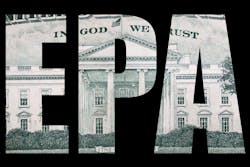Sticker Shock: TSCA Fees Could Soon Be a Lot More Expensive
On Nov. 16, 2022, the U.S. Environmental Protection Agency (EPA) published a supplemental proposal modifying its 2021 proposed rule that would amend the 2018 Toxic Substances Control Act (TSCA) fees rule. The EPA’s assistant administrator warned us to be prepared for sticker shock. The proposed increases are significant. Here is what you need to know.
Why the New Fee Schedule
TSCA authorizes the EPA to collect fees associated with actions taken under TSCA Sections 4, 5, and 6 and with respect to information management under TSCA Section 14 of an amount that captures not more than 25% of the costs of administering these TSCA activities. For a variety of reasons, the agency did not collect nearly that amount in the five years preceding the proposal, and the proposed fees are intended to do a better job of addressing the shortfall. Below is a quick overview of the current and proposed fee schedule.
Discussion
Balancing the need for sufficient revenue and the burdens imposed on the regulated community is never easy. Increased fees will aid with decreasing uncertainty in the EPA’s decision-making and its timely completion of evaluations on new and existing chemical substances and improve transparency and documents that meet the scientific standards under TSCA Section 26. There is also no question the EPA has the statutory authority to raise fees to recover 25% of its costs. That said, the proposed fees are considerably higher; smaller entities will especially be impacted.
Issues likely to be considered during the comment period that closes in mid-January 2023 include the distribution of the fees among the categories; proposed exemptions; and other aspects of the rule, including when manufacture or import must cease to avoid paying fees, in addition to the magnitude of the fee increase.
Regulated entities will welcome the EPA’s use of the best available science and weight of scientific evidence in its risk evaluations. These statutory requirements have not been met adequately in the first 10 risk evaluations. The deadlines for risk evaluations are not necessarily the critical issue for regulated entities; rather it is the agency’s identification of unreasonable risk determinations based on risk evaluations that many believe were developed in a manner inconsistent with TSCA Section 6 and the EPA’s implementing regulations. The increased fees under TSCA Section 6 should aid with addressing this.
The proposed fees will also provide the EPA with the requisite funding to ensure its successful oversight of activities under TSCA. Most stakeholders recognize that increased funding alone will not improve the EPA’s administration of TSCA. To ensure success, agency leadership will need to continue to manage the program, and increased funding will help. If the proposal is promulgated as, or as close to as proposed, the expectation on this Administration to produce results will be high. The adage “you get what you pay for” rings true here, and higher fees will increase the pressure on the EPA to improve its implementation of TSCA.
About the Author
Lynn L. Bergeson, Compliance Advisor columnist
LYNN L. BERGESON is managing director of Bergeson & Campbell, P.C., a Washington, D.C.-based law firm that concentrates on conventional, biobased, and nanoscale chemical industry issues. She served as chair of the American Bar Association Section of Environment, Energy, and Resources (2005-2006). The views expressed herein are solely those of the author. This column is not intended to provide, nor should be construed as, legal advice.

![Table 1[42] Table 1[42]](https://img.chemicalprocessing.com/files/base/ebm/chemicalprocessing/image/2022/12/Table_1_42_.6390f710a8956.png?auto=format,compress&fit=max&q=45?w=250&width=250)
